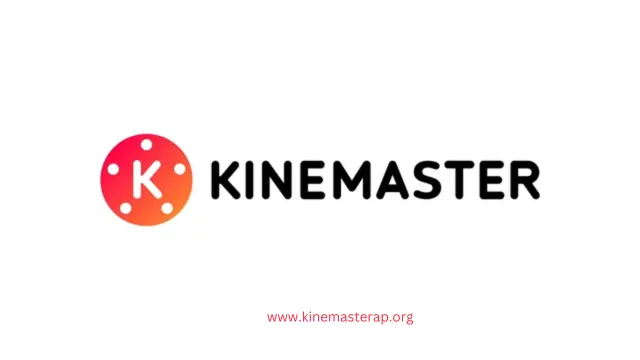The Evolving Landscape of Video: Key Trends Shaping 2025
The digital realm continues its relentless evolution, and at its forefront stands video content. In 2025, video is no longer just a medium for entertainment; it’s a cornerstone of communication, marketing, education, and social interaction. As we navigate this dynamic landscape, several key trends are emerging, reshaping how we create, consume, and interact with video content. Let’s delve into the most significant shifts defining the video sphere in 2025.
1. The Reign of Personalized and Interactive Video Experiences:
Gone are the days of one-size-fits-all video content. In 2025, personalization is paramount. Viewers expect content tailored to their interests, preferences, and even their specific context. This trend is fueled by advancements in data analytics and AI, allowing creators to dynamically adapt video content based on individual user profiles.
Interactive video is also gaining significant traction. Features like clickable elements, quizzes embedded within videos, branching narratives, and 360-degree exploration are no longer novelties but expected features. These interactive elements boost engagement, encourage active participation, and provide a more immersive and memorable viewing experience. From interactive product demos to personalized learning modules, the possibilities are vast.
2. Short-Form Video Dominance Persists and Evolves:

The meteoric rise of short-form video platforms like TikTok has fundamentally altered content consumption habits. In 2025, this trend continues, with short, engaging videos remaining a dominant force. However, the format is evolving. We’re seeing a greater emphasis on high-quality production, creative storytelling within the time constraints, and seamless integration of short-form video across various platforms, including Instagram Reels, YouTube Shorts, and even LinkedIn.
Brands are increasingly leveraging short-form video for quick, impactful messaging, behind-the-scenes glimpses, and user-generated content campaigns. The challenge lies in capturing attention instantly and delivering value within a limited timeframe, pushing creators to be more innovative and concise.
3. The Maturation of Live Streaming and Real-Time Engagement:
Live streaming has moved beyond simple broadcasts. In 2025, we’re witnessing a maturation of this format, with increased emphasis on high production value, interactive features like live polls and Q&A sessions, and seamless integration with e-commerce. Live shopping events are becoming increasingly popular, offering real-time interaction between brands and consumers.
Related articles 01:
1. https://kinemasterap.org/building-a-successful-and-engaging-youtube-channel-for-kids
3. https://kinemasterap.org/top-5-easiest-video-editing-apps-unleash-your-inner-filmmaker
4. https://kinemasterap.org/the-booming-market-of-youtube-shorts-a-comprehensive-overview
Furthermore, live streaming is being integrated into various aspects of our lives, from virtual events and concerts to educational webinars and collaborative work sessions. The demand for authentic, unscripted content and real-time engagement continues to drive the growth and sophistication of live streaming platforms and tools.
4. AI-Powered Video Creation and Editing Takes Center Stage:
Artificial intelligence is revolutionizing the video production process. In 2025, AI-powered tools are becoming more accessible and sophisticated, assisting with tasks ranging from script generation and automated editing to background removal and voiceover creation. This democratization of video production empowers individuals and small businesses to create professional-looking content without extensive technical expertise or resources.
AI is also enhancing video quality through features like automatic upscaling, noise reduction, and intelligent color correction. These advancements streamline workflows, reduce production costs, and allow creators to focus on the creative aspects of storytelling.
5. Immersive Experiences: The Rise of VR, AR, and XR in Video:
Virtual Reality (VR), Augmented Reality (AR), and Extended Reality (XR) are moving beyond niche applications and entering the mainstream video landscape. In 2025, we’re seeing more immersive video experiences being adopted across various sectors, from entertainment and gaming to education and training.
VR offers fully immersive environments, allowing viewers to step into the narrative. AR overlays digital information onto the real world, enhancing experiences like product visualization and interactive storytelling. XR encompasses all these technologies, blurring the lines between the physical and digital. While widespread adoption is still on the horizon, the potential of immersive video to create deeply engaging and transformative experiences is undeniable.
6. Accessibility and Inclusivity Become Essential Video Components:
In 2025, creating accessible and inclusive video content is no longer an afterthought but a fundamental requirement. This includes providing accurate closed captions and subtitles for viewers with hearing impairments, offering audio descriptions for visually impaired individuals, and ensuring diverse representation in video content.
Platforms and creators are increasingly recognizing the importance of reaching a wider audience and adhering to accessibility standards. Tools and guidelines are becoming more readily available, making it easier to create video content that is inclusive and caters to the needs of all viewers.
7. Data-Driven Video Strategies for Enhanced Performance:

Related articles 02:
1. https://kinemasterap.org/crafting-compelling-vlogs-from-short-video-clips-a-comprehensive-guide
2. https://kinemasterap.org/building-a-successful-and-engaging-youtube-channel-for-kids
4. https://kinemasterap.org/the-indispensable-role-of-context-in-effective-video-production
5. https://kinemasterap.org/creating-a-3d-video-a-comprehensive-guide
Data analytics plays a crucial role in optimizing video content for maximum impact. In 2025, creators and marketers are relying heavily on data insights to understand audience behavior, identify trends, and measure the effectiveness of their video strategies.
Metrics like watch time, engagement rates, click-through rates, and conversion rates provide valuable feedback, allowing creators to refine their content, target the right audiences, and achieve their desired outcomes. Data-driven decision-making is essential for staying ahead in the competitive video landscape.
8. The Growing Demand for Authentic and Sustainable Video Content:
Amidst the constant influx of polished and often overly produced content, there’s a growing demand for authenticity and transparency. Viewers are increasingly drawn to genuine storytelling, relatable creators, and content that feels less like advertising and more like a genuine connection.
Furthermore, there’s a rising awareness of the environmental impact of digital content creation. Sustainable video production practices, such as minimizing waste, utilizing energy-efficient equipment, and promoting responsible consumption, are gaining traction.
9. The Blurring Lines Between Video Content and Commerce:
Video is increasingly becoming a direct pathway to purchase. In 2025, we’re seeing a seamless integration of video content with e-commerce platforms, allowing viewers to discover and buy products directly within the video experience.
Interactive product showcases, shoppable live streams, and embedded product links are becoming commonplace. This convergence of content and commerce creates a more convenient and engaging shopping experience, blurring the lines between entertainment and transaction.
Conclusion:
The video landscape in 2025 is characterized by personalization, interactivity, and a relentless pursuit of engagement. Short-form video continues its reign, while live streaming evolves into a sophisticated platform for real-time interaction. AI is democratizing video creation, and immersive technologies offer exciting new possibilities. Accessibility and data-driven strategies are paramount, and there’s a growing demand for authentic and sustainable content. As these trends continue to shape the digital sphere, understanding and adapting to them will be crucial for anyone looking to effectively communicate, connect, and thrive in the evolving world of video. The future of video is dynamic, innovative, and brimming with potential.














